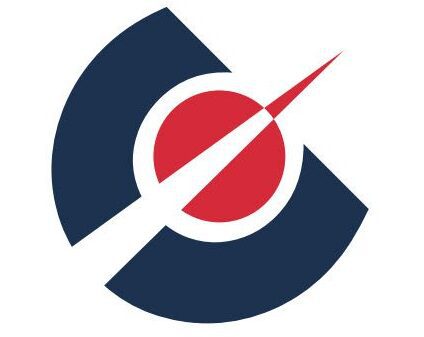Military Resume Tips 2025: Transitioning Veterans' Guide to Civilian Careers
Military veterans are recognized for their discipline, leadership, and mission-first mentality. But when it comes to job searching, especially in the civilian world, those strengths don’t always translate directly on paper—or online.
In fact, according to the latest Veteran Employment Data (March 2025), the unemployment rate for veterans is 3.8%. That’s better than the general population, but there’s more to the story. Veteran underemployment—when you’re working below your skill level—is still a serious issue. Transitioning from a military career to a civilian role isn’t just about getting any job. It’s about getting the right job. And that starts with a solid, strategic approach to how you present yourself.
That’s why we’ve put together these essential military resume tips for 2025—starting with the first step in your new mission: Check Your Six.
🧭 Welcome to Civilian Career Boot Camp: First Drill — “Check Your Six”
In the military, “check your six” means to watch your back—your six o’clock position. In job search terms? It means covering the six major areas of professional communication that employers check before even thinking about calling you for an interview.
Your civilian mission: Make a recruiter’s first impression of you clear, confident, and civilian-ready.
✅ 1. Voicemail: Make It Heard, Not Weird
Your mission: Ditch the robotic “You have reached 5-0-1-2…” or the adorable toddler cameo and replace it with a crisp, professional greeting.
Example:
“Hi, you’ve reached [Your Name]. I’m not available right now, but if you’re a recruiter or potential employer, please leave your name and number and I’ll get back to you shortly. Thank you!”
🎯 Why it matters: Recruiters often call before emailing. If they hit a confusing or unprofessional voicemail, they might not leave a message—or call back at all.
✅ 2. Dedicated Job Search Email: Separate the Mission from the Mess
Your mission: Create a clean, dedicated job search email account that keeps your job hunt organized and your inbox under control.
Example:
-
Good:
james.t.miller@gmail.com -
Good:
jtmiller.jobsearch@outlook.com -
Not-so-good:
tacodad420@hotmail.comorkillazniper82@yahoo.com(unless you’re applying to be a video game character).
🎯 Pro Tip: Use Gmail or Outlook for a more professional vibe and keep it separate from your online shopping and fantasy football alerts.
✅ 3. Professional Email Address: No Jokes, No Numbers, No Nonsense
Your mission: Avoid emails that read like your high school AIM username.
Examples:
-
✔️
john.a.smith@gmail.com -
❌
hotstuff2022@aol.com -
❌
armybeastx24@yahoo.com
🎯 Tip: Numbers can imply age or lack of professionalism. Stick with variations of your name, and leave the memes for Instagram.
✅ 4. Email Signature: Tiny Space, Big Opportunity
Your email signature is like a business card that signs every email for you. Don’t leave it blank.
Your mission: Show you’re serious with a polished, complete email signature.
Example:
John A. Smith
Operations Manager | U.S. Army Veteran
(555) 123-4567 | john.a.smith@gmail.com
LinkedIn: linkedin.com/in/johnasmith
🎯 Tip: Still on active duty? Include your current title and rank, but use a civilian-friendly job title underneath.
✅ 5. Personal Brand Statement (PBS): Your One-Liner That Packs a Punch
Your mission: Write a short, memorable statement that sums up what you do best and the value you bring. Use this in your resume, LinkedIn headline, and even your cover letters.
Examples:
-
For HR:
“Human Resources Leader with 10+ years supporting 3,000+ personnel worldwide with a focus on diversity and inclusion.” -
For Logistics:
“I get the right product to the right place, at the right time—every time.”
🎯 Tip: This is your career tagline. Keep it short, strong, and specific.
✅ 6. Social Media Check: Clean It Up or Lock It Down
Your mission: Make sure your online presence helps your job search—not hurts it.
🎯 Do:
-
Have a complete, up-to-date LinkedIn profile.
-
Make sure your profile photo is current and professional.
-
Share relevant content that highlights your industry knowledge.
🛑 Don’t:
-
Post political rants, profanity, or party pics in public view.
-
Forget that recruiters will look you up.
Pro Tip: Not on LinkedIn yet? It’s time. It’s your digital resume, networking hub, and proof you’re serious about your civilian career.
Bonus Intel: Recruiters Are Using AI to Find You
Recruiters in 2025 are using next-gen search tools like Findem to source candidates based on attributes—not just keywords. That means your LinkedIn profile, email signature, and resume all work together to tell a story about who you are and what you bring to the table.
Your Next Mission: Get Resume-Ready
Before you hit apply, make sure your resume is:
-
ATS-friendly
-
Keyword-optimized
-
Written in clear civilian language
-
Focused on results and achievements
🎯 Need help crafting your military-to-civilian resume? Check out these veteran-specific tools:
Final Word: Your Career is Your New Command
Whether you’ve served four years or 20, your transition to the civilian workforce is a mission worth preparing for. Don’t go in under-equipped. With the right communication tools and a powerful resume, you’ll stand out—and stand proud—in your next career.
Written by Cassie Hatcher, CEO of Career Confidence LLC, Certified Professional Resume Writer (CPRW), and Certified Veteran Career Strategist (CVCS). Cassie has helped hundreds of veterans land jobs at top employers like Amazon, Lockheed Martin, Northrop Grumman, Meta, and UPS.
👇 Drop a comment and let us know: Which of these six steps have you already completed? Need help with any of them? We’re here for you.
